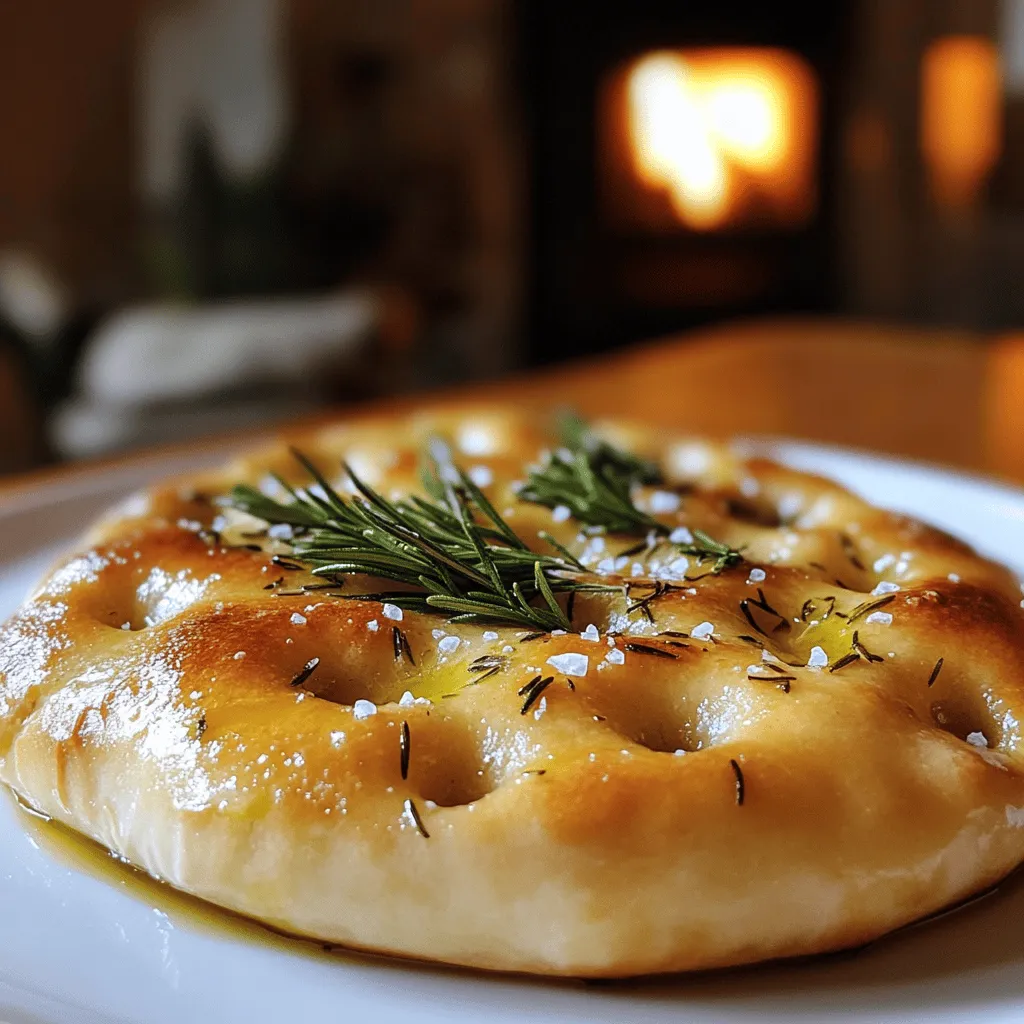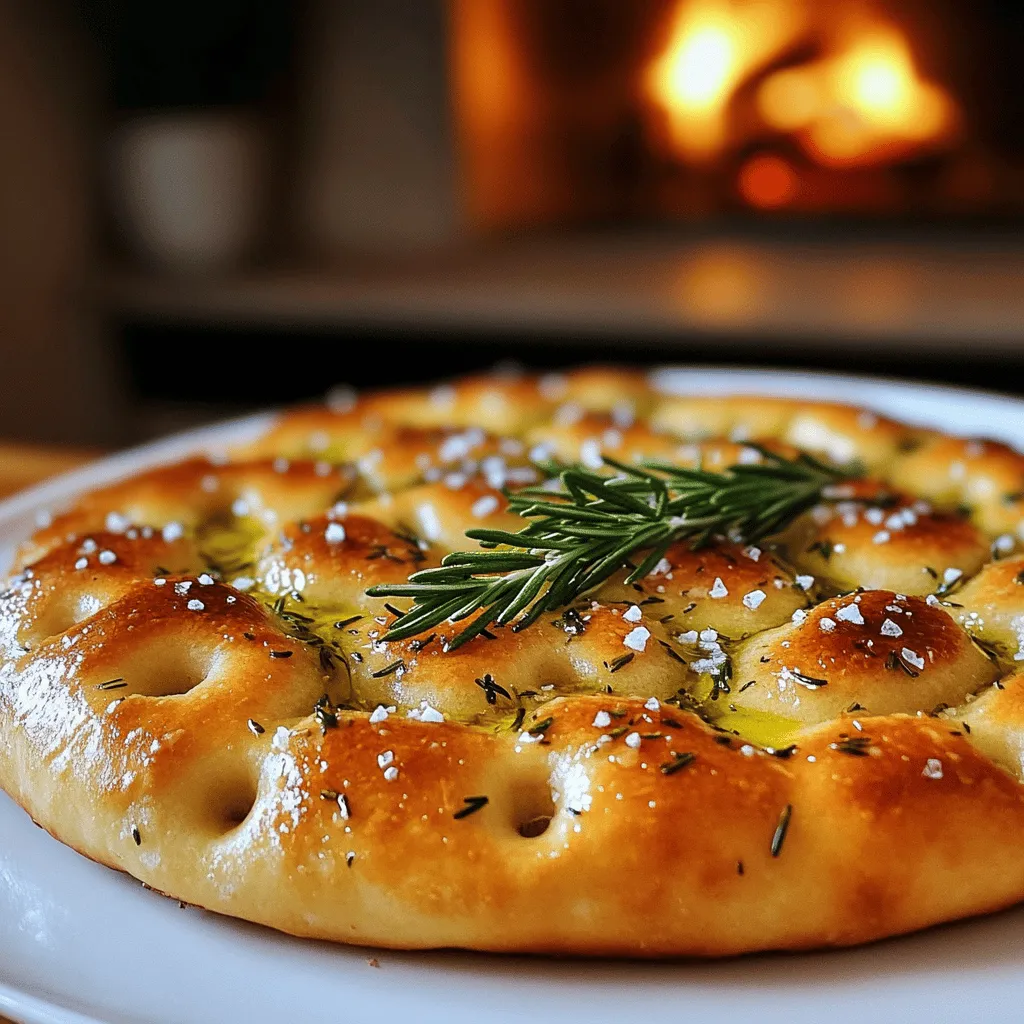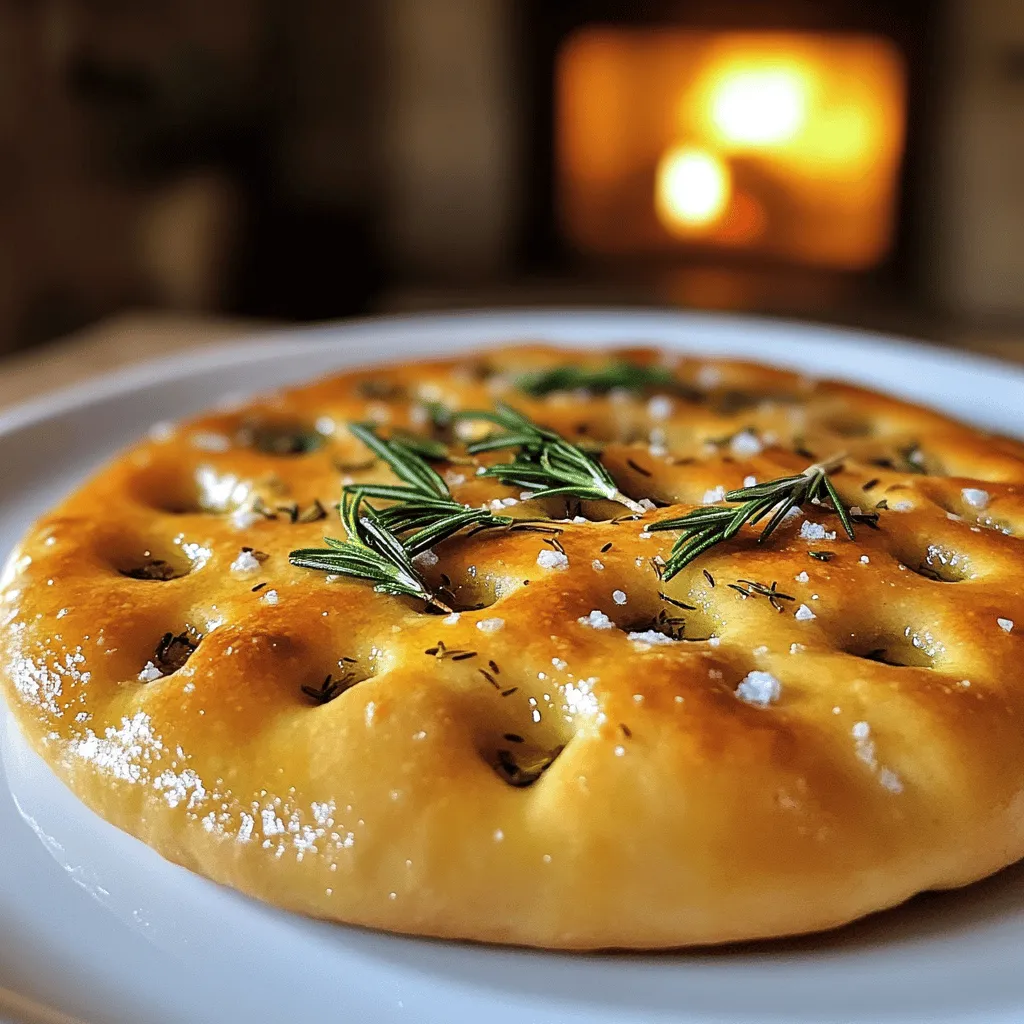Ready to bake delicious focaccia rosemary bread right in your kitchen? This easy recipe will transform your meals and impress your guests. With just a few simple ingredients and straightforward steps, you can create a flavorful bread that adds warmth to any table. I’ll share tips to avoid common mistakes and explore the benefits of rosemary. Get your apron on, and let’s dive into the art of making focaccia!
How Can You Make the Perfect Focaccia Rosemary Bread at Home?
Making focaccia rosemary bread at home is a fun and rewarding experience. First, gather your ingredients. You will need 4 cups of all-purpose flour, 1 ½ teaspoons of salt, 1 tablespoon of sugar, and 2 ¼ teaspoons of active dry yeast. You will also need 1 ⅓ cups of warm water, ⅓ cup of olive oil, 3 tablespoons of fresh rosemary, and flaky sea salt for topping.
Now, let’s dive into the step-by-step process. Start by mixing the warm water, sugar, and yeast in a small bowl. Let it sit for about 5-10 minutes until it’s frothy. This shows your yeast is active. In a large bowl, mix the flour and salt. Make a well in the center, then pour in the yeast mixture and olive oil. Stir with a wooden spoon until a shaggy dough forms.
Next, knead the dough on a floured surface for about 7-10 minutes. You want it smooth and elastic. Place the dough in a greased bowl, cover it, and let it rise in a warm spot for about 1 hour. It should double in size.
Once it has risen, gently punch it down. Transfer the dough to a greased baking sheet or pan. Stretch it into a rectangle or circle, using your fingers to make dimples. Drizzle olive oil over it, covering the dimples, and sprinkle fresh rosemary and flaky sea salt on top.
Cover the dough loosely and let it rise for another 30 minutes. While it rises, preheat your oven to 425°F (220°C). Bake the focaccia for 20-25 minutes until it’s golden brown. It should sound hollow when tapped on the bottom. Let it cool slightly, then slice and enjoy.
To avoid common mistakes, ensure your yeast is fresh. Don’t rush the rising times; they help develop flavor. Also, don’t skip the dimpling; it gives the focaccia its unique look and texture.
For the full recipe, you can refer to the detailed instructions given above. This focaccia rosemary bread will be a great addition to any meal or just a snack on its own!
What Makes Rosemary a Key Ingredient in Focaccia Bread?
Rosemary is a star in focaccia bread. Its strong, earthy taste adds depth to each bite. The fragrant notes of rosemary elevate the bread’s overall flavor. When you mix fresh rosemary with dough, it becomes aromatic and inviting. This herb blends well with the soft, chewy texture of focaccia.
How Does Rosemary Enhance the Flavor of Focaccia?
Rosemary enhances focaccia by bringing a savory profile. Its woodsy flavor balances the bread’s richness from olive oil. Each sprig you sprinkle adds a burst of freshness. This makes every slice unforgettable. You can also try mixing rosemary with garlic for a bolder taste. The combination creates a delightful twist that many love.
What Are the Health Benefits of Using Rosemary in Your Bread?
Using rosemary in your bread offers many health perks. This herb is rich in antioxidants, which help fight free radicals. Rosemary can also boost your memory and mood. It may even aid digestion, making your meal more enjoyable. Adding rosemary to your focaccia not only tastes good but is good for you too.
What Other Herbs Can Complement Focaccia Flavors?
Many herbs pair well with focaccia besides rosemary. Thyme brings a subtle earthiness that works beautifully. Basil adds a sweet, aromatic touch. Oregano brings in a slightly spicy note. You could also try sage for a unique flavor twist. Mixing these herbs allows you to create your own signature focaccia. Experiment and find your favorite blend!
For a simple recipe, check out the Full Recipe for rosemary bliss focaccia.

What Techniques Will Help You Achieve the Right Focaccia Texture?
Focaccia texture is key to its appeal. The right techniques can make your bread amazing.
How Can Proper Hydration Affect the Texture of Focaccia?
Hydration is very important. Focaccia bread needs a wet dough. This helps create a light and airy texture. Use 1 ⅓ cups of warm water in your dough. It helps the yeast work well. The dough should feel sticky but manageable. This moisture creates those lovely holes in the bread.
What Are Some Shaping Techniques for Focaccia Bread?
Shaping focaccia is fun and easy. After your dough rises, gently punch it down. Then, place it on a greased baking sheet. Use your fingers to stretch it out. Make dimples all over the surface. These dimples hold in olive oil and toppings. This step gives focaccia its signature look.
Why Is It Important to Let the Dough Rest?
Resting the dough is a must. After shaping, let it rise again for 30 minutes. This gives the dough time to relax. It also helps develop flavor and texture. The second rise makes the bread softer and airier. It ensures a nice crust when you bake it.
For the complete method, check out the Full Recipe for Rosemary Bliss Focaccia. You’ll love the results!
What Are the Best Toppings and Variations for Focaccia Rosemary Bread?
Focaccia is a blank canvas for flavors. You can top it with many tasty things.
What Popular Toppings Pair Well with Rosemary Focaccia?
Rosemary focaccia loves simple toppings. Consider adding sliced olives, cherry tomatoes, or caramelized onions. You can also sprinkle fresh garlic to boost flavor. The saltiness of olives pairs well with the herb. Cherry tomatoes add a sweet touch.
How Can You Experiment with Different Focaccia Flavors?
Don’t be afraid to try new flavors! Add cheese like mozzarella or feta for a creamy bite. You can also mix herbs like thyme or oregano with rosemary. Want some heat? Try adding crushed red pepper flakes. Each new topping brings a twist to the classic taste.
What Are Some Creative Vegetable Additions for Focaccia?
Vegetables can make focaccia even better. Try adding thin slices of zucchini or bell peppers. Roasted garlic and caramelized onions add sweetness. Spinach or kale can also be a nice touch. Just make sure to chop them small so they bake well.
For the full recipe, check out the detailed instructions on how to make this flavorful focaccia rosemary bread.

How Do You Serve and Store Focaccia Rosemary Bread?
Focaccia rosemary bread is a treat that shines at any meal. You can serve it warm or at room temperature. Cut it into squares for easy sharing. A simple drizzle of olive oil adds a nice touch. Pair it with balsamic vinegar for an extra flavor boost.
What Are the Best Serving Suggestions for Focaccia?
You can serve focaccia rosemary bread as an appetizer. It works well with cheeses or cured meats. For a fun twist, use it as a sandwich base. Fill it with fresh vegetables and spreads. Guests will love this tasty option. You can also enjoy it alongside soup or salad. The soft texture complements many dishes.
How Should You Store Leftover Focaccia Bread?
To keep leftover focaccia fresh, wrap it in plastic wrap. You can also place it in an airtight container. Store it at room temperature for up to two days. For longer storage, freeze it. Slice it before freezing for easy use later.
What Are Some Ideal Pairings for Serving Focaccia at Gatherings?
At gatherings, focaccia pairs well with a variety of dips. Hummus and tzatziki add a nice contrast. You can also serve it with a fresh herb pesto. For a heartier option, try it with marinara sauce. These pairings will impress your guests and enhance the flavors.
For the full recipe and detailed instructions, check out the Full Recipe.
What Is the History and Cultural Significance of Focaccia Bread?
Focaccia bread has roots deep in Italian history. It likely began in ancient Rome, where people baked flatbreads on hot stones. This simple bread was a staple for families. Over the years, it evolved into the fluffy, flavorful focaccia we enjoy today.
Focaccia is more than just food in Italy. It plays a key role in family meals and gatherings. Families often share it during special occasions or holidays. Each region has its own twist on the recipe, adding unique toppings and flavors.
In Italian cuisine, focaccia serves many purposes. It can be a side dish, a snack, or a base for sandwiches. Its versatility makes it a beloved choice in Italian homes. People often pair it with olive oil, herbs, and even cheeses.
Focaccia also has cultural significance. It symbolizes warmth and togetherness. When you share focaccia, you share love and tradition. Making it at home connects you to Italian heritage. You can embrace the same joy that families have felt for centuries.
This bread highlights the importance of fresh ingredients. Olive oil, rosemary, and sea salt come together to create bold flavors. Focaccia showcases the beauty of simple ingredients. Each bite is a taste of Italian culture and history.
To create your own focaccia, check out the Full Recipe. It will guide you through making this delicious bread from scratch. Enjoy the flavors and the history with every slice.
Making the perfect focaccia rosemary bread at home is both fun and rewarding. We explored the essential ingredients, step-by-step instructions, and common mistakes to avoid. Rosemary plays a key role by adding flavor and health benefits. We also discussed techniques for achieving that perfect texture. Don’t forget the toppings—get creative and mix flavors! Lastly, knowing how to serve and store your bread will keep it fresh. Embrace this delicious bread, and enjoy sharing it with family and friends. Now, you’re ready to bake!








